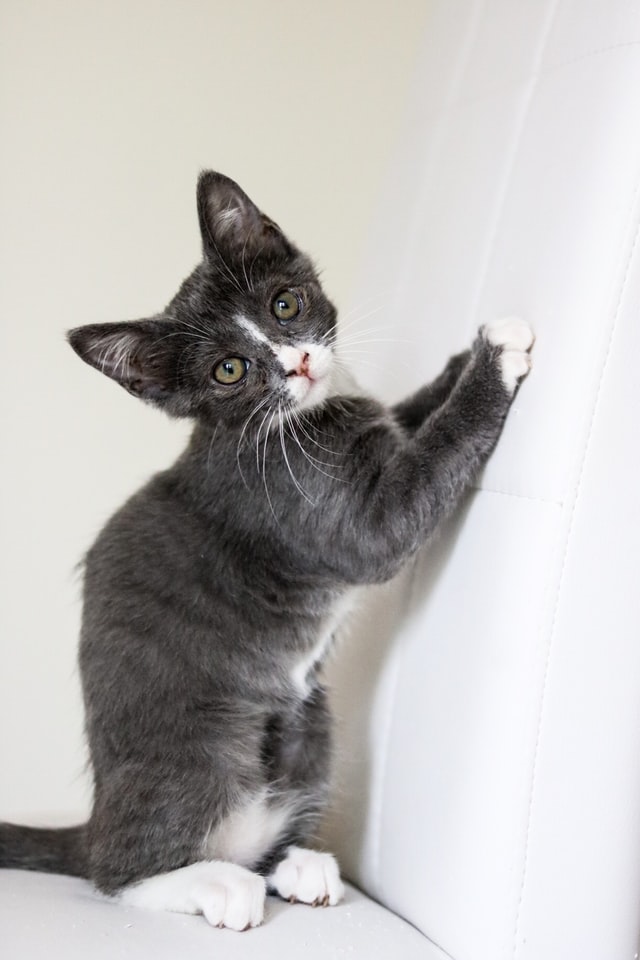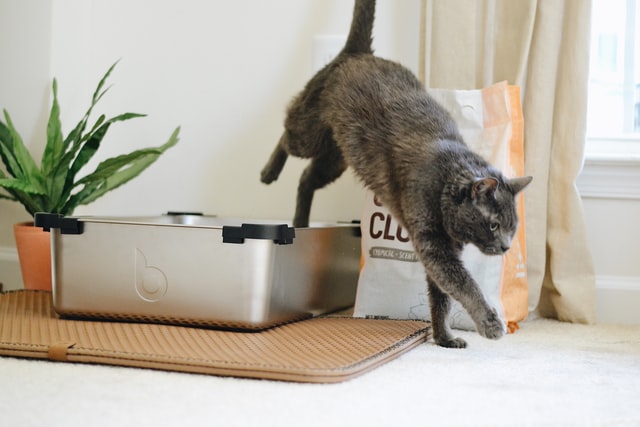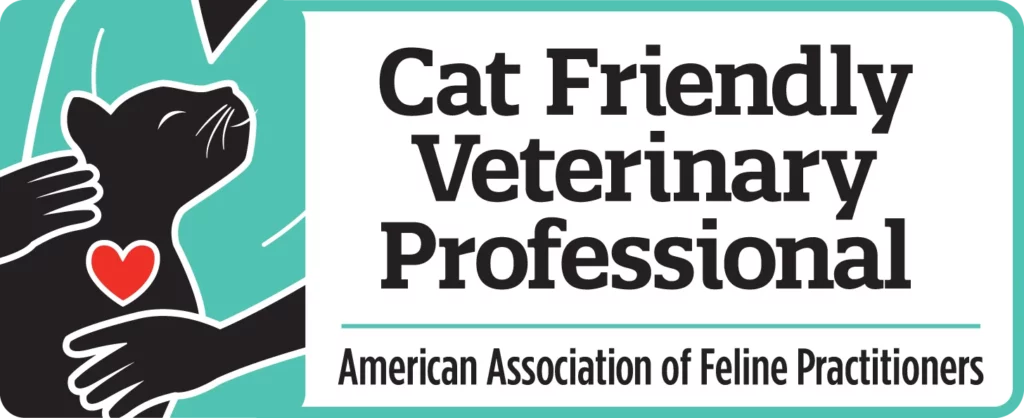Content Warning: This post contains descriptions of animal cruelty that may upset some readers. I avoid going into great detail and only include information that is necessary to make my point, but given the topic I can’t completely avoid it. Please be prepared if you choose to read on.
As someone who runs a cat business, it should be no surprise that I care a lot about cat welfare. Cats are really amazing creatures and, unfortunately, their wellbeing can often be secondary to our own wants. Thankfully, in many cases the needs of all involved can be balanced so cats, humans, and other animals can live together happily.
One of the areas I am particularly passionate about is declawing cats. As you might assume, I am against the practice of elective declawing of cats to prevent scratching. Obviously, if there is a medical indication in the cat that is a completely different situation. Scratching is a completely natural behavior for cats and serves a variety of purposes for the cat. Unfortunately, this behavior can create trouble for humans and our furniture.

One of the solutions people came up with to solve this is surgically removing cat’s claws. Sometimes the front claws are removed and sometimes all claws are removed. This obviously greatly benefits us. Our furniture isn’t in danger of being shredded and we don’t have to worry about scratches. Problem solved, right?
Unintended Consequences of Declawing
Unfortunately, it’s not that simple. Many people either quickly or years later notice changes in their cats’ behavior following a declawing. In some cases, people don’t necessarily make the connection between the declawing and the behavior changes so the cycle continues and they end up declawing future cats. Plus, it solves the scratching issue so people may assume the consequences may be a personality trait of the cat, that the cat is doing it out of spite for something, or due to one of the many myths about cats.
What Is Declawing?
Remember the content warning above? Be prepared!
Without going into too many details, declawing involves surgically removing the claws and bone at the very tip of the cat’s paws. To give you an idea of what happens in human terms, think of the very tip of your fingers from your first knuckle being cut off. That’s what happens to cats when they are declawed. Needless to say, it’s not a fun procedure for the cats and it can go very wrong if it’s not done properly. Even a correctly done declawing can create problems.
One of the biggest problems that can happen is an increase in biting. I have a whole post on aggression due to declawing, but it is one of the more common issues we see arise in declawed cats. I want to go over another extremely common issue we see in declawed cats that less people know about for now. Hopefully it will help keep some toe beans intact AND prevent stress for the humans!
Declawing and Litter Box Problems
One of the problems with declawing (from both a human and a cat standpoint) is the pain associated with declawing. As one could assume from how the procedure is done, the procedure requires time to heal and paws can be very sensitive following the procedure. Unfortunately, during this time cats still have to engage in all their normal behaviors including using the litter box.

During this time, two things can happen: First, cats may get litter stuck in their fresh wounds from the declaw procedure. This can irritate the wounds and lead to increased pain. Cats may become obsessive and try to mutilate their paws to stop the pain, making the problem worse. As it comes from when the cat steps into the box, they may develop an association with the pain and the litter box.
Second, even if they don’t get litter directly in their wounds, walking on the fresh wounds can result in pain. Depending on how the cat has to get into the litter box, they may experience pain as they step into the box. Once again, this may result in association with pain and the litter box.
Once cats learn that the litter box is associated with pain, it can be extremely difficult to break the association. Cats, much like humans, will actively avoid things that create pain or other unpleasant experiences (which is part of why I don’t recommend using squirt bottles). Since the litter box is associated with pain, they may decide that a nicer spot to pee is right outside the box or to leave you a stinky present on your pillow.
The cat won’t understand that it’s because of the declaw procedure and that it may improve with time (more on the choice of wording with “may” in a moment). They just know litter box=pain. While it’s possible to help them recognize that the litter box isn’t associated with pain, it can be work and you may need to work with a behavior professional and/or veterinarian to get things resolved.
Unfortunately, even after the wounds have healed the pain may linger due to a poorly done procedure or damage to the tissue in their paws. Your cat’s gait will be affected due to their feet not having all their bones (“toe beans” is the medical term, I believe. Probably.) and as they age, they may develop painful arthritis. This can lead to a litter box aversion later in life. If your cat develops mobility problems due to arthritis or pain, they may decide it’s not worth it to use the box (if they are even physically able to get in into the box).
Addressing Litter Box Problems In Declawed Cats
For those who have declawed their cat and run into litter box issues, the good news is that there are things that can be done. You can try a sensitive paw litter or even use soft sandbox sand. Trying a lower entry litter box or making your own low entry litter box may work, too.
If you aren’t able to figure out what’s going on, you may need to work with a behavior consultant and your veterinarian to address the litter box aversion. The best way to fix the problem, though, is to not have it happen in the first place… Don’t declaw your cat! It’s not only cruel, but it will likely cause you problems down the line.
If you’re concerned about cats scratching your furniture, scratching is completely manageable. You can absolutely prevent your cat from scratching your furniture if you strategize correctly and know what to look for in a quality scratching post. Your cat will even thank you by not pooping on your pillow!










